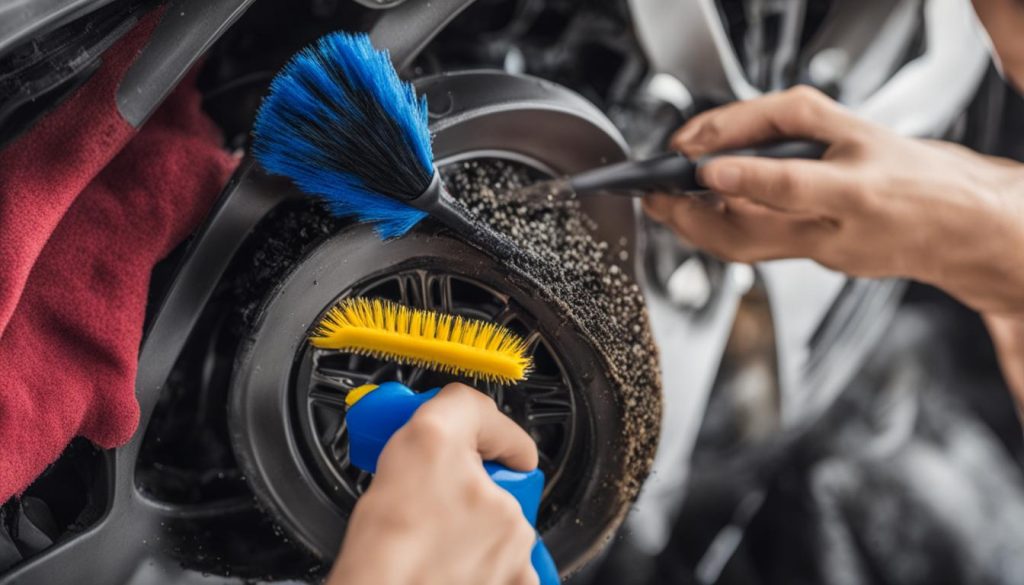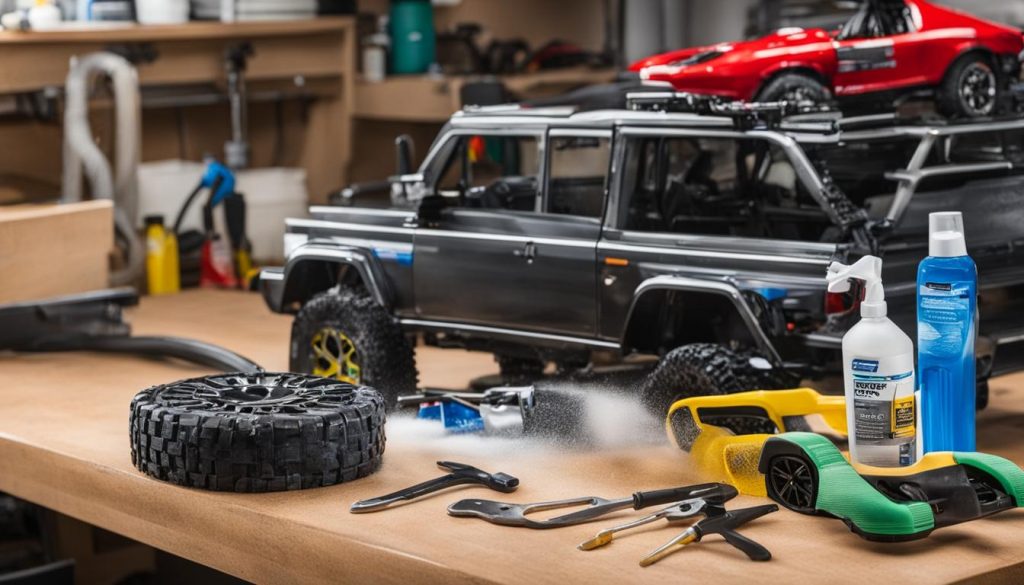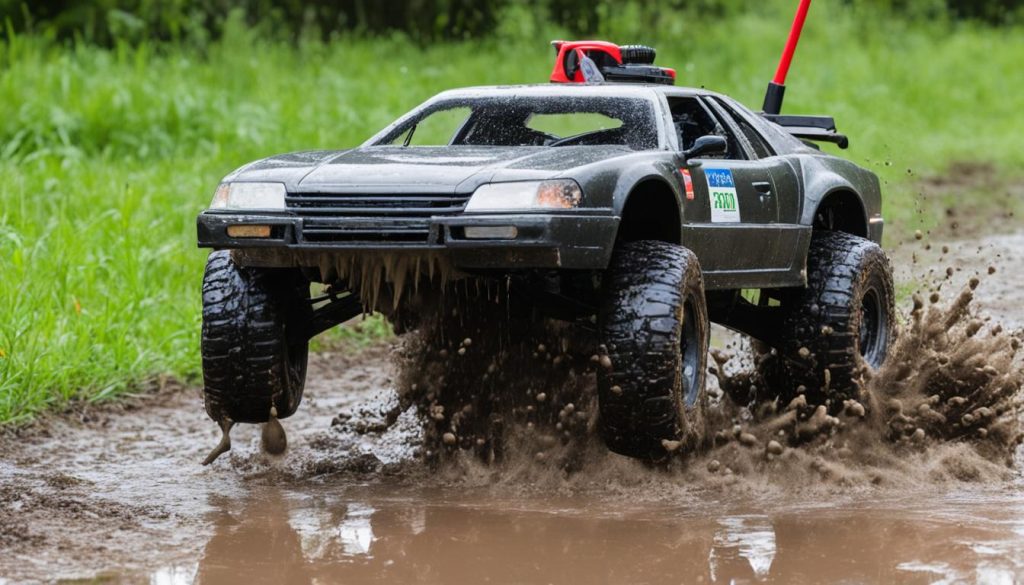If you’re facing the frustration of your RC car not moving, don’t worry. In this article, we’ll explore the potential causes of this issue and provide troubleshooting tips to get your RC car back on track. Whether it’s not moving forward, backward, or at all, we’ve got you covered.
Key Takeaways:
- Slipped pinion gear or loose/broken wires could be the cause.
- Check batteries, wheels, gears, and receiver for any issues.
- Low or dead battery might be the reason behind a non-moving RC car.
- Consider re-meshing or replacing the pinion gear.
- Seek professional assistance if the problem persists.
Why Does My RC Car Turn but Not Move?
If you find that your RC car is able to turn but not move forward, there are several possible reasons for this issue. By identifying and addressing these potential causes, you can get your RC car back to full functionality and enjoy an uninterrupted driving experience.
Potential Causes
Here are a few common culprits when your RC car turns but fails to move forward:
- A slipped pinion gear: The pinion gear, which connects the motor to the wheels, may have become loose or dislodged. This can prevent the car from moving forward properly. You can try re-meshing or replacing the pinion gear to resolve this issue.
- Loose or broken wires: Check the wiring connections in your RC car to ensure they are secure. Loose or broken wires can disrupt the power transfer, affecting the car’s ability to move forward. Trace the wires and repair any loose or damaged connections as needed.
- Worn-out motor: Over time, the motor of your RC car may wear out, reducing its performance. If your car is not moving forward, a worn-out motor could be the reason. Consider replacing the motor to restore proper functionality.
- Faulty receiver: The receiver, which receives signals from the transmitter to control the car’s movements, could be faulty. If the receiver fails to receive the correct signals, it can result in the car not moving forward. Troubleshoot the receiver or consider replacing it if necessary.
Troubleshooting Tips
Before addressing the potential causes mentioned above, there are a few simple troubleshooting steps you can take:
- Check battery installation: Ensure that the batteries in your RC car are properly installed, with the correct polarity. Incorrect battery installation can prevent the car from moving forward.
- Charge batteries fully: Make sure the batteries are fully charged. Low battery power can limit the car’s ability to move forward.
- Inspect for debris: Examine the wheels and gears for any dirt, debris, or obstructions that could be impeding movement. Cleaning or removing such debris can help restore proper functionality.
If none of the troubleshooting steps mentioned above resolve the issue, it may be necessary to perform more in-depth repairs or seek professional assistance to get your RC car moving forward again.
Why Does My RC Car Turn but Not Go?
When an RC car turns but does not move, there are a few common causes to consider. One possibility is a low or dead battery, so it’s important to recharge or replace the battery if necessary. Another potential issue could be dirt or debris clogging up the wheels or gears, preventing them from turning properly. Additionally, if your RC car has a radio-controlled receiver, it may not be receiving the signal correctly from the transmitter. Try replacing the battery in your transmitter to resolve any potential signal issues.
It is crucial to check the battery level or replace it if necessary. A dead or low battery can restrict the power supply to the motor, causing the RC car to turn but not go. Make sure to recharge or replace the battery to ensure optimal performance.
Another common culprit for an RC car not moving is dirt or debris that accumulates in the wheels or gears. Over time, dirt and debris can build up, interfering with the smooth rotation of these essential components. Cleaning the wheels and gears regularly can help remove any obstructions and restore proper functionality.
If your RC car is equipped with a radio-controlled receiver, it is worth considering whether it is receiving the signal correctly from the transmitter. Issues with the receiver can prevent the RC car from moving, even when the motor is functioning correctly. To address this, try replacing the battery in your transmitter, as a weak or dying battery can lead to signal reception problems.
| Possible Causes | Solutions |
|---|---|
| Low or dead battery | Recharge or replace the battery |
| Dirt or debris in wheels or gears | Clean the wheels and gears to remove obstructions |
| Signal reception issues | Replace the battery in the transmitter |
Why Does My RC Car Turn but Not Drive?
If your RC car is turning but not moving, the most likely cause is a lack of power. The motor in your RC car requires sufficient electricity to generate the necessary torque to propel the vehicle forward or backward. There are a few troubleshooting steps you can take to address this issue:
- Check the Batteries: Ensure that your RC car’s batteries are properly installed and fully charged. Sometimes, the batteries may not be making proper contact, so double-check their positioning and connections.
- Inspect the Wires: Loose or disconnected wires can interrupt the flow of electric current to the motor, preventing it from functioning properly. Carefully examine the wires and connections for any signs of damage or disconnection.
- Alternative Receiver Test: Try connecting your RC car’s servos to a different receiver with a matching frequency. If the servos function correctly with the alternate receiver, it indicates that the original receiver may be faulty and needs to be replaced.
If none of these steps resolve the issue, it could indicate a problem with the motor itself. Consider seeking further assistance or contacting the manufacturer for guidance on motor troubleshooting or replacement.
Know Your Motor: Brushed vs. Brushless
When dealing with motor-related issues in RC cars, it’s essential to understand the type of motor your vehicle uses. There are two primary types: brushed and brushless.
Brushed Motors: These motors have internal brushes that provide electrical contact between the power source and the motor’s rotating armature. Over time, the brushes can wear out or become damaged, affecting motor performance.
Brushless Motors: Unlike brushed motors, brushless motors do not have internal brushes. They rely on electronic commutation to deliver power to the motor. Brushless motors are generally more efficient, durable, and capable of higher speeds compared to brushed motors.
| Motor Type | Pros | Cons |
|---|---|---|
| Brushed | Lower cost Simple maintenance Good torque at low RPMs |
Lower efficiency Brush wear and tear Less power for speed |
| Brushless | Higher efficiency Superior speed and power Long lifespan |
Higher cost More complex maintenance |
By identifying the type of motor in your RC car, you can gain insight into its specific characteristics and potential issues which may affect its performance. This knowledge will help you troubleshoot and maintain your RC car effectively.
Why Does My RC Car Stop Moving?
If your RC car suddenly stops moving, there could be several potential reasons behind this issue. By troubleshooting the possible causes, you can identify and resolve the problem effectively.
1. Check the Battery
One common culprit for a stationary RC car is a low or dead battery. Make sure to check the battery level and replace it if necessary. Ensure that the batteries are properly inserted and securely connected to avoid any loose connections.
2. Verify the Wires
Loose or disconnected wires can also prevent an RC car from moving. Carefully inspect the wiring system and reconnect or resolder any loose or broken wires. This will establish a consistent flow of power and enable proper movement.
3. Examine the Gears
The gears in your RC car play a crucial role in its movement. Check if the gears are properly aligned and tightened. Misaligned or loose gears can impede the car’s ability to move forward or backward. Make any necessary adjustments or repairs to ensure smooth gear operation.
4. Assess the Motor and Receiver
If the above steps fail to resolve the issue, it’s possible that there may be a more complex problem with the motor or the receiver. Consider testing the motor and replacing it if it has become worn-out or faulty. Similarly, a malfunctioning receiver can disrupt the signal transmission and hinder the car’s movement. Troubleshoot or replace the receiver if needed.
Remember to follow the manufacturer’s instructions and guidelines for troubleshooting and maintenance. If the problem persists even after attempting these solutions, it may be worth contacting a professional or reaching out to the manufacturer’s customer support for further assistance.
| Possible Causes | Solutions |
|---|---|
| Low or dead battery | Check battery level and replace if necessary |
| Loose or disconnected wires | Reconnect or resolder loose or broken wires |
| Misaligned or loose gears | Align and tighten gears properly |
| Worn-out or faulty motor | Test and replace motor if necessary |
| Malfunctioning receiver | Troubleshoot or replace the receiver |
By addressing these potential issues, you can restore your RC car’s mobility and continue enjoying the thrill of remote-controlled driving.
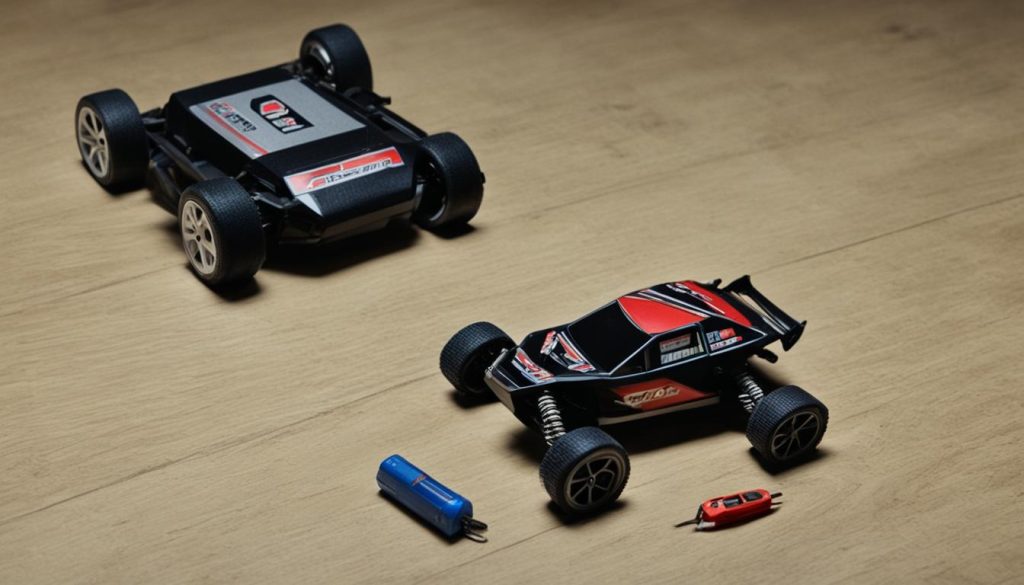
Why Does My RC Car Steer but Not Move?
If your RC car is able to steer but not move, there are a few potential causes to consider. One possibility is a loose or broken wire from the motor, which can be checked and repaired. Another potential issue could be a slipped pinion gear, which can be re-meshed or replaced. In some cases, a broken steering arm may be the cause of the problem. Check for any broken plastic strips near the front wheels and consider replacing them with a piece of stiff wire if necessary.
If you’re still experiencing issues with your RC car not moving despite being able to steer, it’s important to check these potential problem areas. By addressing these possible causes, you can get your RC car back on track and enjoy your remote-controlled adventures.
| Possible Causes | Diagnostic Steps | Solutions |
|---|---|---|
| Loose or broken wire from the motor | Check the wiring connections near the motor and inspect for any visible damage. | Repair or replace the wire as necessary. Ensure proper connections are made. |
| Slipped pinion gear | Inspect the gear mesh between the pinion gear and the motor gear. | Re-mesh the gears or replace the pinion gear, if needed. |
| Broken steering arm | Examine the front wheels for any broken plastic strips or disconnected steering components. | If necessary, replace the broken steering arm with a piece of stiff wire or seek a replacement part. |
Why Is My RC Car Steering but Not Moving?
When your RC car is able to steer but not move forward, there are a few potential causes to consider. One possibility is a loose or broken wire to the motor, which can be traced and repaired. Another potential issue could be a slipped pinion gear, which can be re-meshed or replaced. It’s also worth checking the battery connections to ensure they are secure and properly charged. If none of these solutions work, it may be necessary to seek further assistance.
Potential Causes
- A loose or broken wire to the motor
- A slipped pinion gear
- Inadequate battery connections
If your RC car is able to steer but not move forward, it’s important to rule out any wiring issues. Check for loose or broken wires that may be impeding the power supply to the motor. If identified, trace the wire and repair any damages. Additionally, a slipped pinion gear can prevent the RC car from moving forward. Inspect the gear for any misalignment or damage, and if necessary, re-mesh or replace it to restore proper functionality.
Furthermore, inadequate battery connections can hinder the RC car’s movement. Ensure that the battery connections are securely attached, free from corrosion, and properly charged. Faulty connections can disrupt the power flow, causing the car to steer without moving forward.
Seeking Further Assistance
If troubleshooting the wiring, pinion gear, and battery connections does not resolve the issue, it may be necessary to seek further assistance. Contacts the manufacturer or an RC car repair specialist who can offer expert guidance and assistance in diagnosing and resolving the problem.
Remember to refer to the troubleshooting tips provided in this article and systematically check each potential cause to identify and address the underlying issue with your RC car.
| Potential Causes | Solutions |
|---|---|
| Loose or broken wire to the motor | Trace and repair or replace the wire |
| Slipped pinion gear | Re-mesh or replace the gear |
| Inadequate battery connections | Securely attach, clean, and charge the batteries |
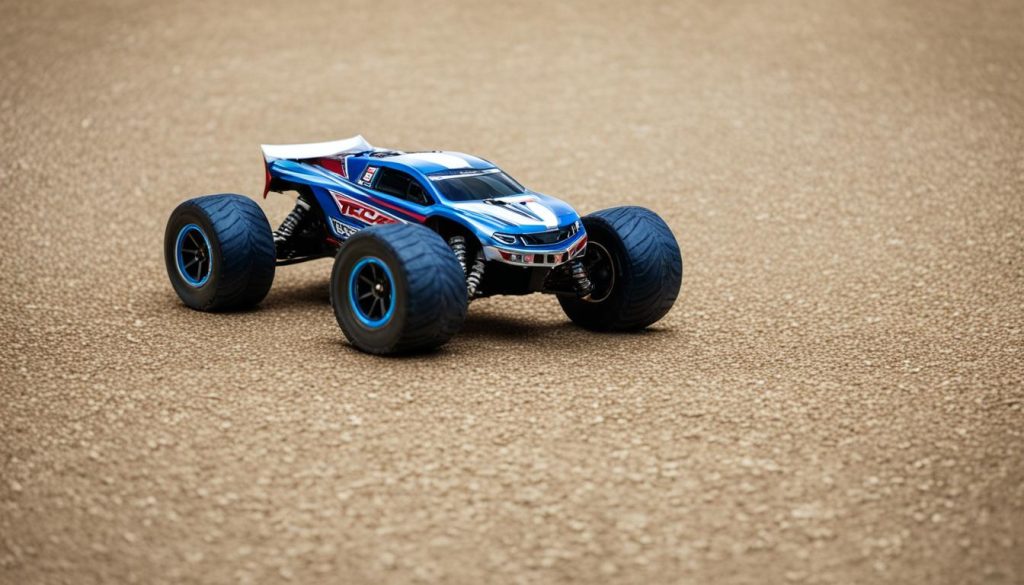
By following these troubleshooting steps and consulting a professional if necessary, you can overcome the challenge of your RC car steering but not moving forward. Properly diagnosing and addressing the underlying causes will ensure that your RC car performs optimally, allowing you to enjoy uninterrupted driving pleasure.
Why Does My RC Car Steer but Not Drive?
If your RC car is able to steer but not drive, there are a few potential causes to consider. One possibility is a loose or broken wire to the motor, which can be checked and repaired. Another potential issue could be a slipped pinion gear, which can be re-meshed or replaced. It’s also worth checking the battery connections to ensure they are secure and properly charged. If none of these solutions work, it may be necessary to seek further assistance.
| Potential Causes | Solutions |
|---|---|
| Loose or broken wire to the motor | – Check the wire connections and repair any loose or broken wires. – Ensure proper connection to the motor. – Re-solder any damaged connections. – Replace the wire if necessary. |
| Slipped pinion gear | – Inspect the pinion gear for any signs of slipping. – Re-mesh the gear with the motor shaft. – Replace the pinion gear if it is worn or damaged. |
| Battery connections | – Check the battery connections for any loose or corroded terminals. – Ensure the connections are securely attached. – Clean the terminals if there is corrosion. – Charge the batteries fully before use. |
| Seek further assistance | – If none of the above solutions work, it may be necessary to consult a professional RC car technician or contact the manufacturer for guidance. |
Conclusion
In conclusion, troubleshooting an RC car that is not moving can be a frustrating but manageable task. By following the steps outlined in this article, you can successfully identify and fix the issues that may be causing your RC car to not respond.
From simple problems like low battery or dirt on the wheels and gears, to more complex issues with the motor or receiver, there are several potential reasons why your RC car may not be receiving a signal or not charging properly.
By thoroughly checking and addressing each possible cause, you can eliminate the problem and get your RC car back on track. However, if the problem persists after troubleshooting, it is recommended to seek professional assistance or reach out to the manufacturer for further guidance and support.
FAQ
Why is my RC car not moving?
There are several potential causes, including a slipped pinion gear, loose or broken wires, a worn-out motor, or a faulty receiver. Additionally, check if the batteries are installed correctly and fully charged and if there is any dirt or debris blocking the wheels or gears.
Why does my RC car turn but not move forward or backward?
This could be due to a slipped pinion gear, loose or broken wires, a worn-out motor, or a faulty receiver. It’s also important to check the battery connections and ensure they are properly charged. Additionally, check for any obstructions like dirt or debris that could be blocking the wheels or gears.
Why does my RC car turn but not go?
If your RC car is not working at all, it could be due to a motor that is not running properly or a faulty receiver. Check the battery connections and ensure they are properly charged. If the issue persists, it may be necessary to seek further assistance.
Why does my RC car turn but not drive?
If your RC car is not moving forward or backward, it may be due to a lack of power. Ensure that the batteries are installed correctly and fully charged, and check for any loose or disconnected wires. If the problem persists, it could be a motor or receiver issue that requires further troubleshooting or professional assistance.
Why does my RC car stop moving?
There are several potential causes for your RC car to stop moving, including low or dead batteries, loose or disconnected wires, or an issue with the motor or receiver. It’s important to check and replace the batteries if necessary and inspect the wires for any damage or disconnections. Additionally, ensure that the gears are properly aligned and tightened. If the problem persists, further troubleshooting may be required.
Why does my RC car steer but not move?
This issue could be caused by a loose or broken wire to the motor, a slipped pinion gear, or a broken steering arm. Check and repair any loose or broken wires, re-mech the pinion gear, and inspect the steering arm for any damage. If needed, replace the steering arm with a suitable alternative.
Why is my RC car steering but not moving forward or backward?
If your RC car is not moving but still steering, possible causes include a loose or broken wire to the motor, a slipped pinion gear, or issues with the battery connections. Check and repair any loose or broken wires, re-mech the pinion gear, and ensure the batteries are installed correctly and fully charged.
Why does my RC car steer but not drive?
If your RC car is steering but not moving, it may be due to a loose or broken wire to the motor, a slipped pinion gear, or issues with the battery connections. Check and repair any loose or broken wires, re-mech the pinion gear, and ensure the batteries are installed correctly and fully charged.
Why is my RC car not responding, not receiving a signal, or not charging?
If your RC car is not responding or not receiving a signal, it could be due to a faulty receiver or transmitter battery. Try replacing the battery in your transmitter to resolve any potential signal issues. If your RC car is not charging, check the charging cable and connection to ensure it is secure and functioning correctly.


